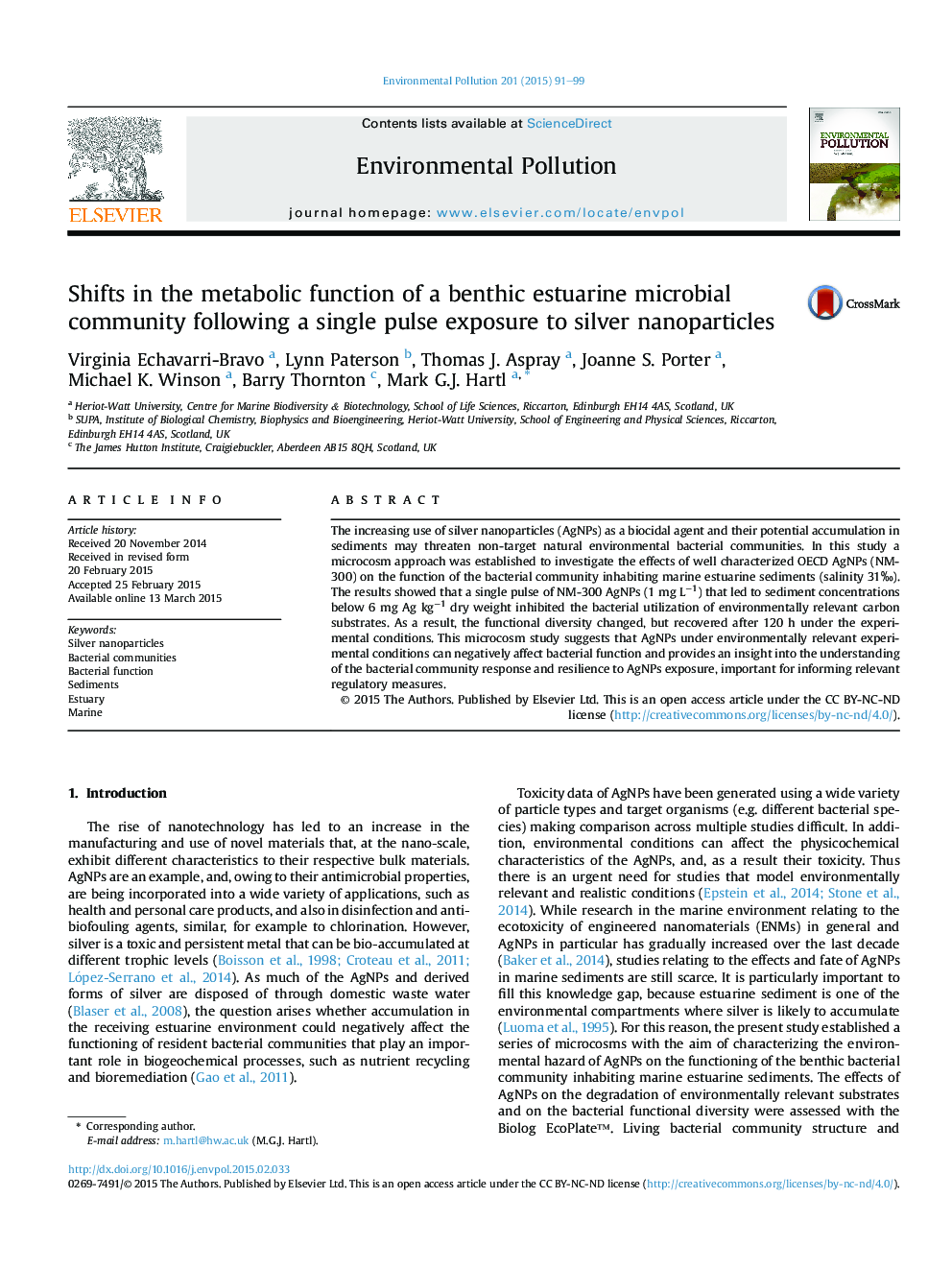| Article ID | Journal | Published Year | Pages | File Type |
|---|---|---|---|---|
| 6316725 | Environmental Pollution | 2015 | 9 Pages |
Abstract
The increasing use of silver nanoparticles (AgNPs) as a biocidal agent and their potential accumulation in sediments may threaten non-target natural environmental bacterial communities. In this study a microcosm approach was established to investigate the effects of well characterized OECD AgNPs (NM-300) on the function of the bacterial community inhabiting marine estuarine sediments (salinity 31â°). The results showed that a single pulse of NM-300 AgNPs (1 mg Lâ1) that led to sediment concentrations below 6 mg Ag kgâ1 dry weight inhibited the bacterial utilization of environmentally relevant carbon substrates. As a result, the functional diversity changed, but recovered after 120 h under the experimental conditions. This microcosm study suggests that AgNPs under environmentally relevant experimental conditions can negatively affect bacterial function and provides an insight into the understanding of the bacterial community response and resilience to AgNPs exposure, important for informing relevant regulatory measures.
Related Topics
Life Sciences
Environmental Science
Environmental Chemistry
Authors
Virginia Echavarri-Bravo, Lynn Paterson, Thomas J. Aspray, Joanne S. Porter, Michael K. Winson, Barry Thornton, Mark G.J. Hartl,
